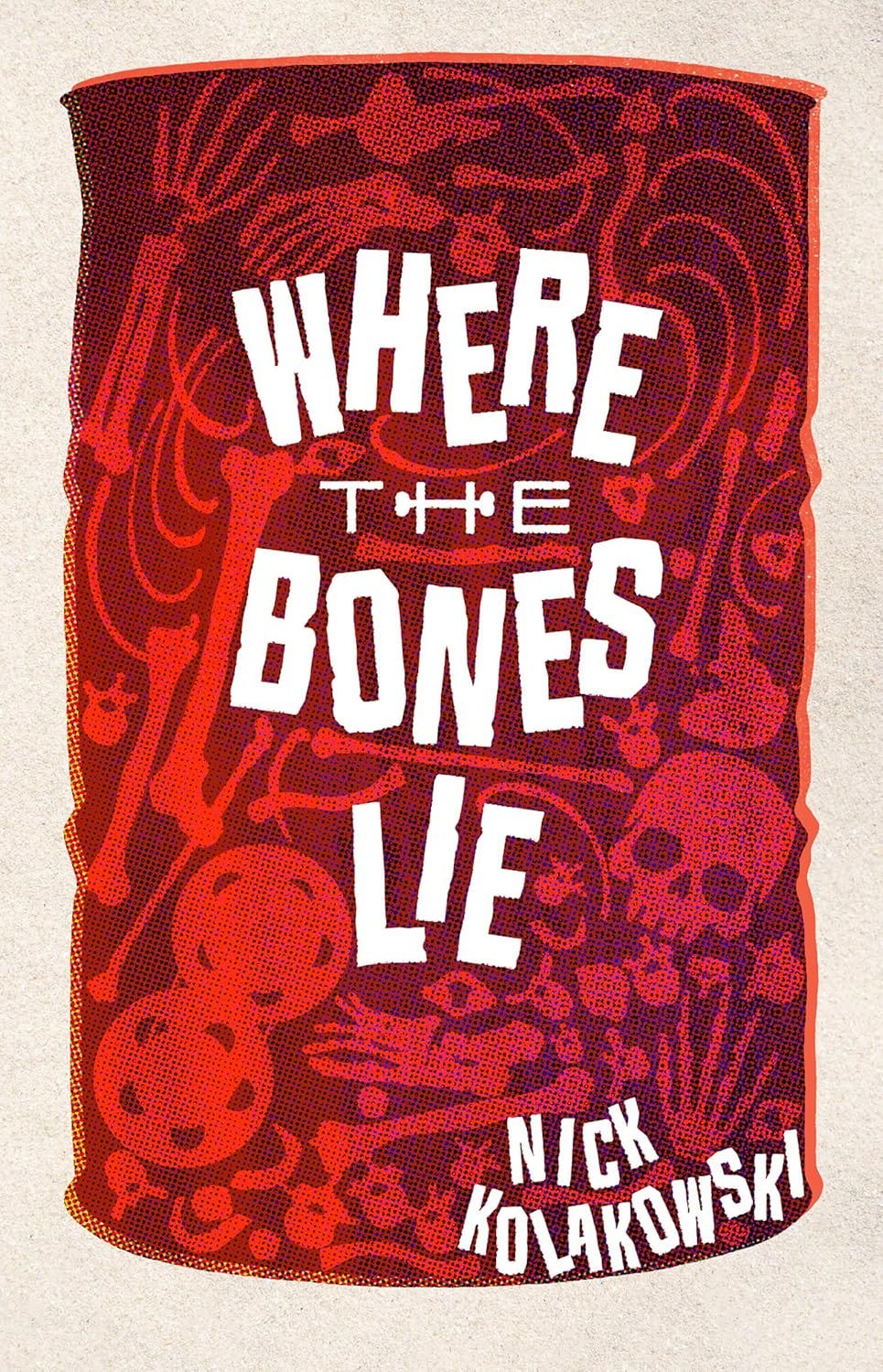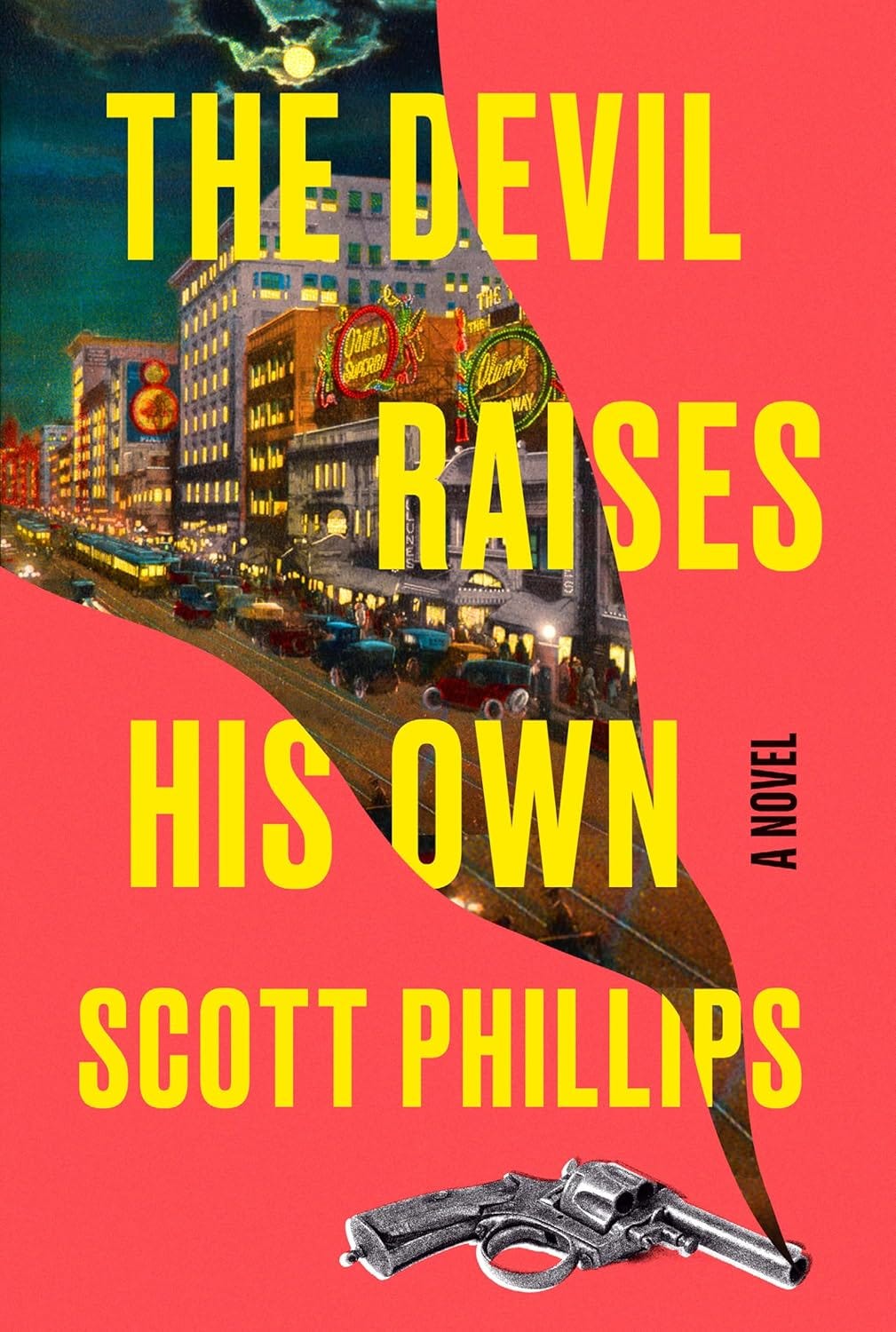It wasn’t intentional, reading a pair of crime novels set in Los Angeles as wildfires blazed around the city, a rain of ash signaling some of the worst days in its history. The books were simply that good, renewing my connection with a place that means a lot to me at a fraught and fragile time.
When we meet Dash Fuller at the start of Nick Kolakowski’s Where the Bones Lie (March 2025), he’s flailing at his fledgling standup comedy career for two reasons. One, he can’t put over a punchline to save his life. And two, he walked away from his previous gig as a fixer at a crisis PR firm, doing the dirty work for Hollywood’s elite, and while “quitting feels liberating at first … the memories never leave.” He’s pressed into service as a Hail Mary by his desperate former boss, and though the job goes sideways it results in Dash’s first solo client. Madeline Ironwood armors herself against L.A.’s lures with a Navy greatcoat and “the kind of eyes a casting director would kill for.” Her father was one of Tinseltown’s legendary bad boys, a smuggler who ran with the city’s players decades earlier. Now, as his exploits are being chronicled in the latest true-crime streaming smash, his body turns up in a barrel in a dried-up lake north of town. Madeline wants answers. And Dash has nothing better to do.
Nick, who wrote some terrific pieces for Noir City magazine while I was editor, paints a beautifully savage portrait of Los Angeles, a place where a luxury swimming pool ends up full of medical gloves that float “like exploded jellyfish” and Hollywood wannabes “lived in fear of the leviathans in their mansions. The fear of never seeing your sorry dreams fulfilled. The fear of ending up in a plastic bag in a canyon grave.” Dash’s bone-deep fatalism is spurred not only by his old beat but an acute sense of the precarity of life in Southern California, making him wonder if “Maybe humanity deserved everything coming to it.” Climate change has dried out that lake, and wildfires factor into the slam-bang climax, making for an eerie read in recent days. Where the Bones Lie is tight, mean, and funny, like the five-minute set that Dash can never quite put together.
Also worth reading: Nick reposted an article he wrote a while back about aerial firefighters, the daredevils who have been doing heroic work battling the blazes in Southern California.
How long has the sordid siren song of the Southland been playing? Scott Phillips sets the clock back over a century in The Devil Raises His Own (2024) and serves up a gloriously salacious early Hollywood history. Bill Ogden, protagonist of Phillips’ Cottonwood (2004), may have decamped for sunnier climes but he’s still taking photographs. He’s one of a sprawling cast of characters, among them Ogden’s murderous but goodhearted granddaughter, a disgruntled silent movie clown, and some pornographic filmmakers with big ideas to class up their fare: “All of it tastefully and artistically done with an eye to creating a product that will be synonymous with erotic excellence.”
Phillips, one of America’s most underrated novelists, has a way with vernacular reminiscent of Charles Portis. Consider Ogden’s genial description of his granddaughter’s disposal of her abusive husband: “She knocked him into the company of the great majority of souls.” Or this cheerful admonition from a brothel madam who has recently added blue movies to her establishment’s offerings: “See that you don’t get any jism on the brocade, it’s a hell of a thing to try and get out.” Every character, no matter how minor, receives a welcome to remember.
Alvin was a thief with aspirations toward the confidence game, but he was a charmless man with a long, skinny neck that led to a head that was always cocked to one side, and that made him look as though he was lying even on the rare occasions when he wasn’t.
Phillips moves between his many players with easy grace and a benevolent lack of judgment, steering them toward a mighty climactic conflagration with his trademark deadpan prose. It’s like Nathanael West’s The Day of the Locust, but with laughs, and it’s not to be missed.
What (Else) I’m Reading
Ethan Iverson storms the cover (!!!) of The Nation with a story on a neglected chapter of jazz history, the years from 1967-1972 centered on the New York nightspot Slugs’. Don’t miss the sidebar, listing essential recordings from the period. It will fill your playlist for weeks. And Ethan has some fascinating supplemental posts at his Substack Transitional Technology providing additional background on the writing of the article and the music.
A city is not a city without 24-hour dining. For the New York Times, Priya Krishna haunts the overnight shift at a Brooklyn diner.
What I’m Drinking
At this rate, I’m going to have to make a pilgrimage to Stoa, the San Francisco bar that prizes minimalism, capping ingredients at four (if that) and scrapping garnishes entirely. Every one of their drinks has been a bare-bones revelation. Their latest triumph that I’ve sampled is the Guillotine, a mezcal cocktail that proves a sterling showcase for my go-to amaro, Cynar.
Guillotine, by Yanni Kehagiaras
1 ½ oz. mezcal (Stoa uses Del Maguey Vida)
1 oz. Cynar
½ oz. dry vermouth (I used Dolin, per Stoa’s recommendation)
Stir. Strain. No garnish.





